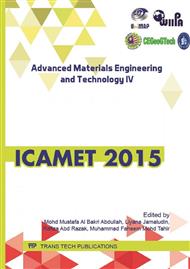p.146
p.151
p.159
p.164
p.169
p.174
p.179
p.183
p.191
Composite Materials Characterization for Aircraft Application
Abstract:
Various composite materials have been developed for many of aircrafts feature and it is important to establish the composite materials characterization procedure based on the airworthiness requirement. Since properties of composites are a function of the properties of the constituent phases, their relative amounts, and processing methods, the overall processing must be carefully evaluated. This paper presents a composite materials evaluation procedure for composite aircraft and provide the effective statistical allowable to be approved by airworthiness certification agency. All material, specimens, fixtures and test results contained within this study were traceable and approved by the agency. In this study 8 different mechanical properties are obtained for 4 environmental conditions from 5 batches for robust sampling. By using modified coefficient of variation, the B-basis value of 0°tensile strength of carbon/epoxy unidirectional composite for elevated temperature/wet condition increases from 2,291MPa to 2,331MPa. The result would be applied to qualify domestic composite materials for aircraft within the level of a global standard.
Info:
Periodical:
Pages:
169-173
Citation:
Online since:
May 2016
Authors:
Price:
Сopyright:
© 2016 Trans Tech Publications Ltd. All Rights Reserved
Share:
Citation:


